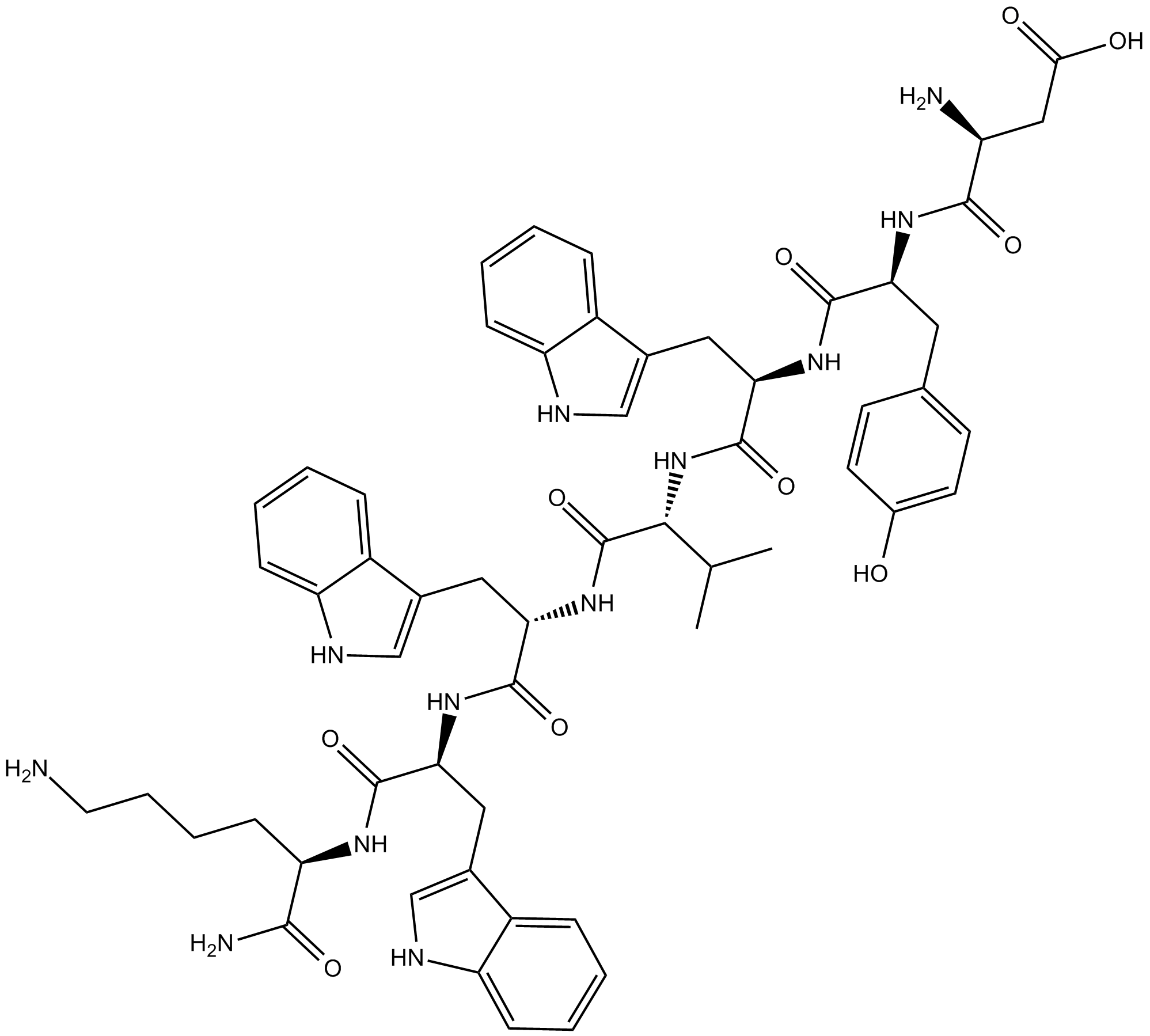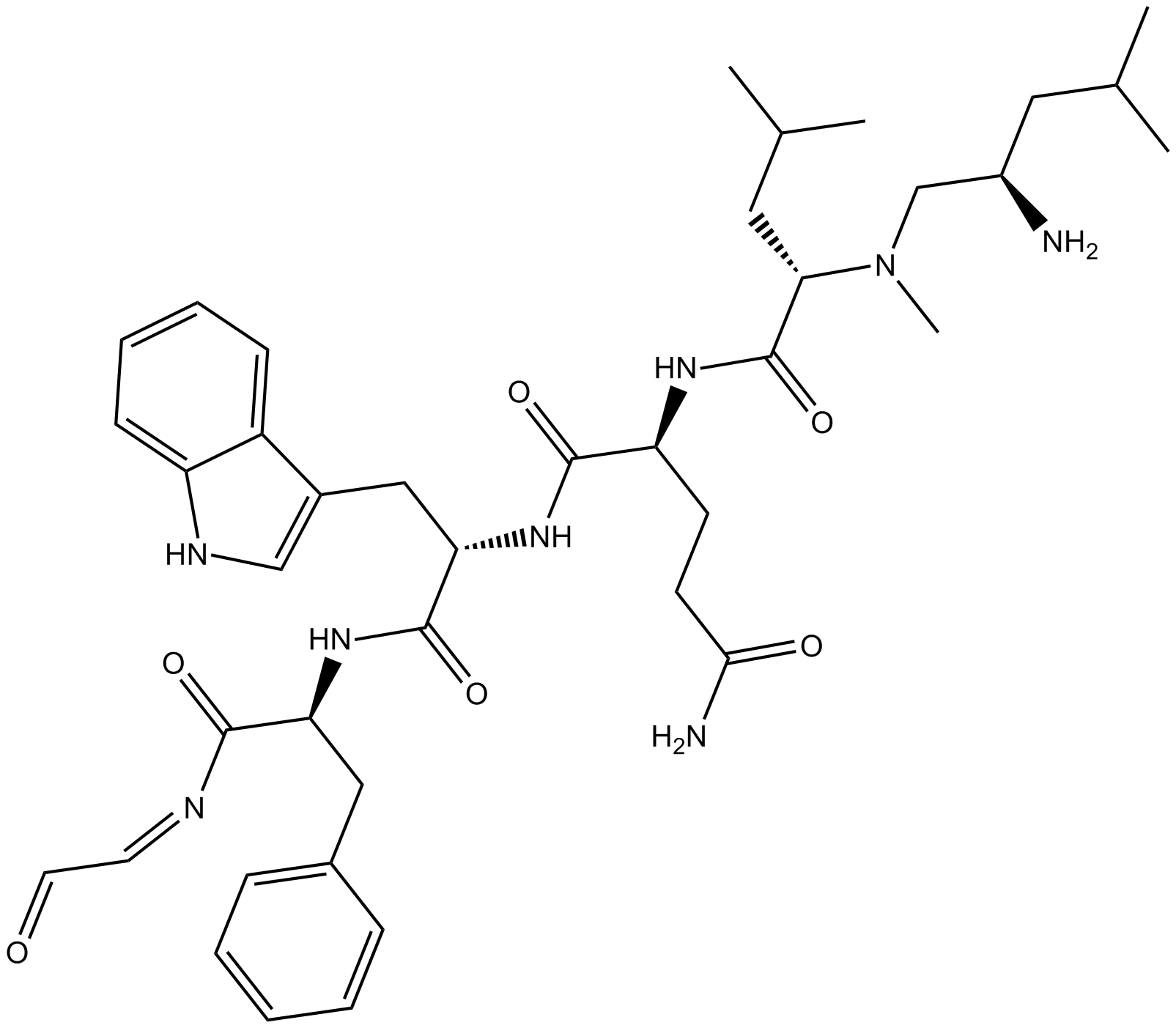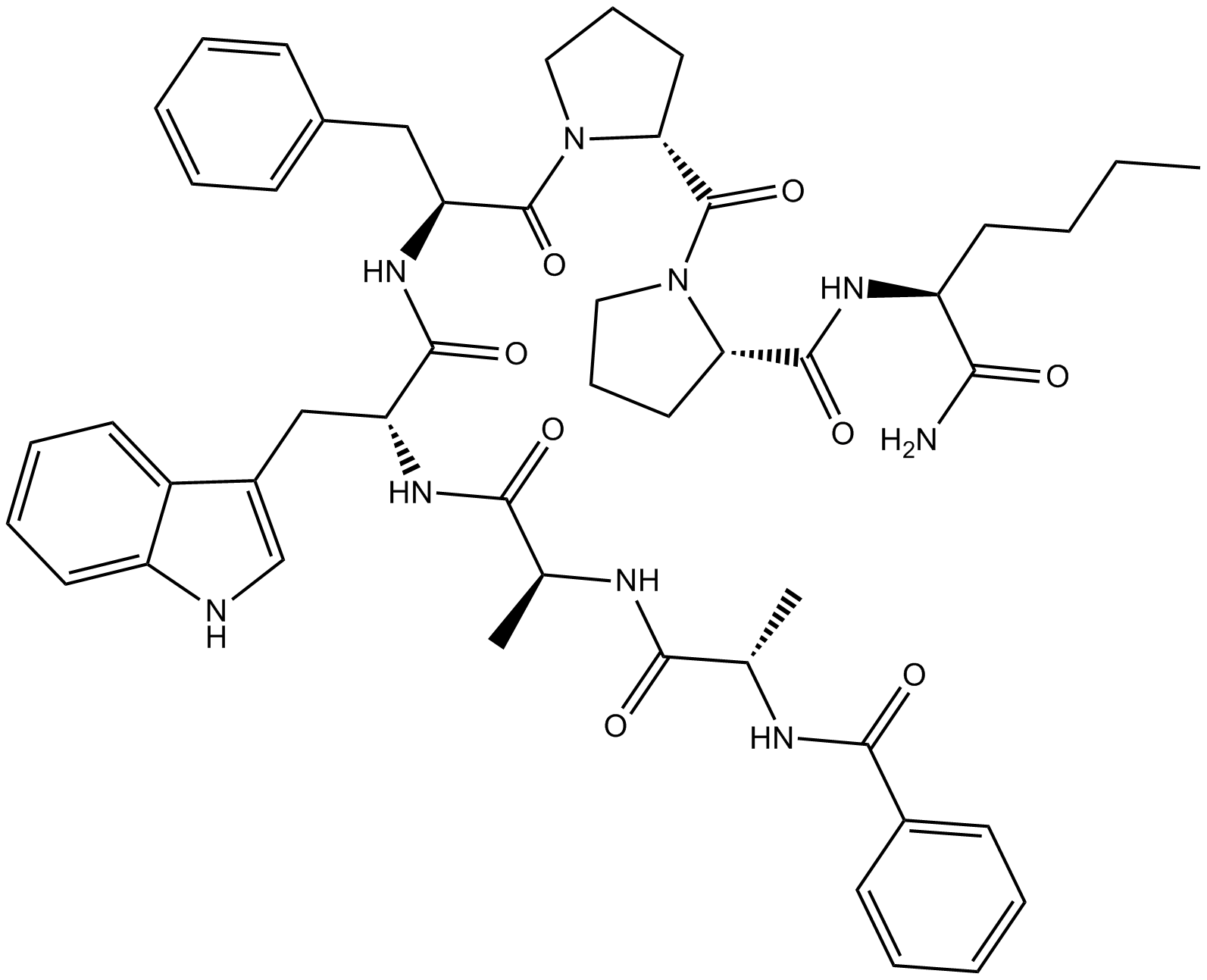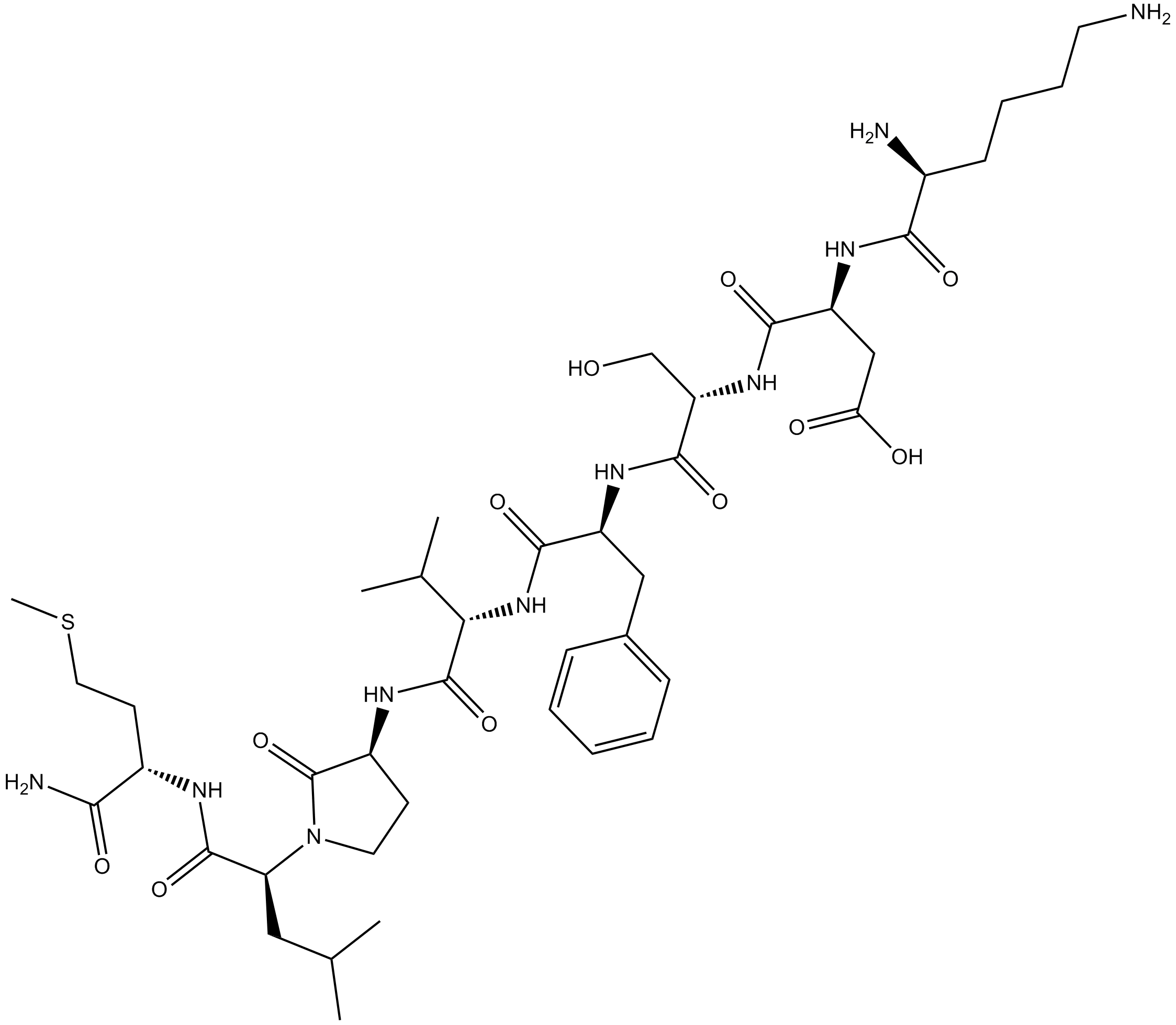GPCR/G protein

All GPCRs share a common seven trans-membrane structure. GPCRs are associated with heterotrimeric G-proteins which are GTP-binding proteins made of alpha, beta, and gamma subunits. When a ligand binds to GPCR, it activates the attached G-protein, the GDP is replaced with GTP. The activated G-protein then dissociates into an alpha and a beta-gamma complex which activates downstream signaling pathways. These intracellular signaling pathways include cAMP/PKA, calcium/NFAT, phospholipase C, protein tyrosine kinases, MAP kinases, PI-3-kinase, nitric oxide/cGMP, Rho, and JAK/STAT.
GPCRs are one of the most important therapeutic targets for various diseases, over 30% of all modern medicinal drugs target this family. Aberrant GPCR functions are involved in pathological conditions such as neurological, immunological and hormonal disorders. A large number of GPCRs have been identified, but whose ligands are not known, are classified as orphan receptors.
-
 B6809 MEN 10376Summary: NK2 receptor antagonist
B6809 MEN 10376Summary: NK2 receptor antagonist -
![[bAla8]-Neurokinin A(4-10)](/pub/media/prod_images/b/6/b6813.png) B6813 [bAla8]-Neurokinin A(4-10)Summary: NK2 receptor agonist
B6813 [bAla8]-Neurokinin A(4-10)Summary: NK2 receptor agonist -
 B5078 MDL 29,913Summary: NK2 tachykinin receptor selective antagonist
B5078 MDL 29,913Summary: NK2 tachykinin receptor selective antagonist -
 B5158 GR 94800Summary: Potent and selective tachykinin NK2 receptor antagonist
B5158 GR 94800Summary: Potent and selective tachykinin NK2 receptor antagonist -
 B5159 GR 64349Summary: Potent and selective tachykinin NK2 receptor agonist
B5159 GR 64349Summary: Potent and selective tachykinin NK2 receptor agonist -
![[Lys5,MeLeu9,Nle10]-NKA(4-10)](/pub/media/prod_images/b/5/b5397.png) B5397 [Lys5,MeLeu9,Nle10]-NKA(4-10)Summary: Highy selective and potent NK2 receptor agonist
B5397 [Lys5,MeLeu9,Nle10]-NKA(4-10)Summary: Highy selective and potent NK2 receptor agonist

